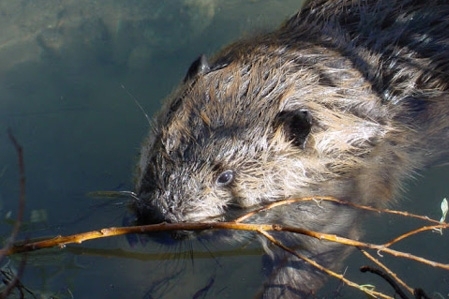Operational Activities: Beaver Damage Management
Beavers are the largest rodents in North America, and their population is estimated to be between 6 and 12 million animals. In most areas, beaver are protected as furbearers by State laws and regulations. Beavers occur in many urban, suburban, and rural areas where there is a food supply and a body of water. Beaver-related conflicts occur when dam-building and tree-cutting result in flooding, habitat damage, and safety problems.
The beaver is an important component of North American ecosystems. Their populations are sometimes associated with damage problems such as flooding of roads and cropland, damage to standing timber and landscaping plantings, and destruction of habitat for trout and native wild rice. Integrated solutions to address problems may include exclusionary devices, habitat manipulation, and population management, as well as novel approaches being evaluated by research.
Biology and Ecology
Developing Science-Based Solutions to Beaver Conflicts
WS' NWRC works to increase knowledge about beaver and management approaches. WS' National Wildlife Research Center (NWRC) conducts research and investigational activities related to a wide variety of wildlife damage issues. In Alabama, NWRC researchers are using radio telemetry and genetic analyses to identify the origin of beavers that move into areas where beaver had previously been removed. Movements of beaver will be examined to determine if seasonal water availability is a determining factor in the recolonization of certain areas in the southern United States. In another study, NWRC is working with the National Oceanic and Atmospheric Administration (NOAA) to learn more about beaver ecology in semi-arid and high desert environments in Oregon's Columbia Basin.


